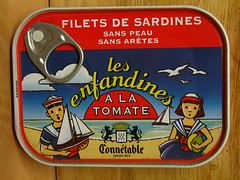

I'm a fervent believer that spending time in a good pub, drinking good beer makes you live longer. The top picture was taken in the Boltmaker's Arms, Keighley. I'm sat waiting for my uncle to get back from the bar and my dad to get back from the loo. It's a tiny, town centre pub that serves the best beer in the world. I'm not exaggerating. The last 30 or so years have been hard to Keighley economically. Most of the mills are now derelict, and many of the engineering firms are rusting away. But, halfway up the Worth Valley is something the town is justifiably proud - the Timothy Taylor brewery. Founded in 1858, it's still family owned and fiercely independent. Until the restrained modernisation of the last few years visitors to the brewery always described it as "Dickensian" - they famously didn't even have a fax machine until about 1990. Also pictured above is Taylor's most popular drink locally, Golden Best. It's a good choice if you want decent conversation to be possible after five or so pints. Another of their beers, Landlord, has won so many industry awards that it is rumoured to have a year off now and then to let another company win.
I've been coming to the Bolts since I was old enough to be served. Back then it was run by a chap named Eric and the interior was highly reminiscent of a village function room, circa 1952. Red vinyl benches, low formica tables, bakelite light switches. In fact, similar to the Lorelei. I suspect I was the only one who liked it that way - there wasn't a murmur from anyone else when Taylor's refit their pub estate about 15 years ago. However, the new interior has weathered nicely and feels as comfortable as my living room, as all good pubs do. Quiet conversation, a roaring fire and a guv'nor who's one of three generations of Keighley publicans. If you're buying, mine's a Landlord, and a packet of Seabrook's Canadian Ham while you're up there. Cheers.

















